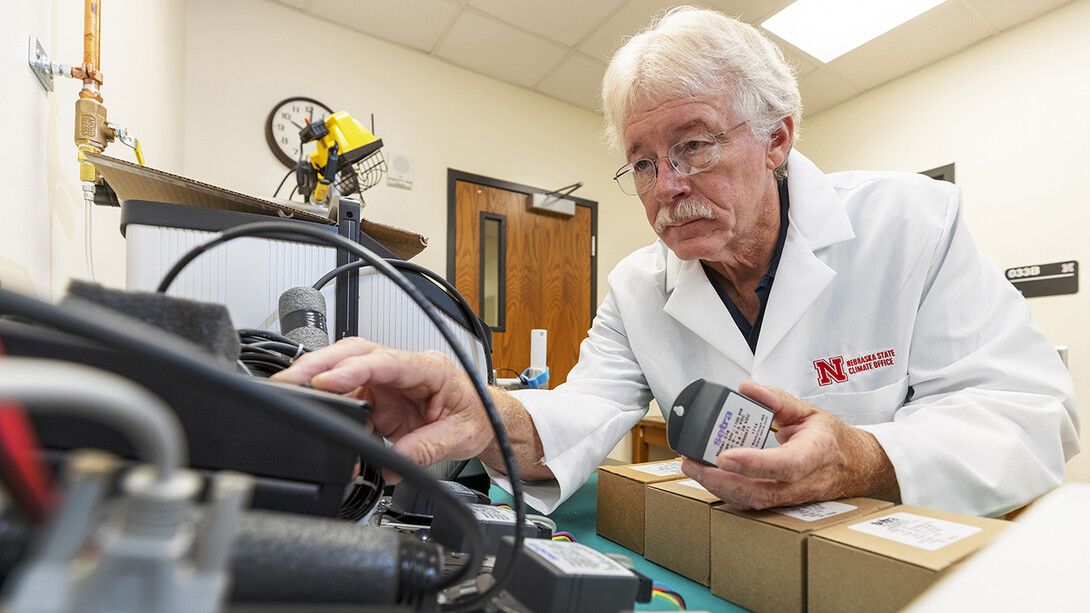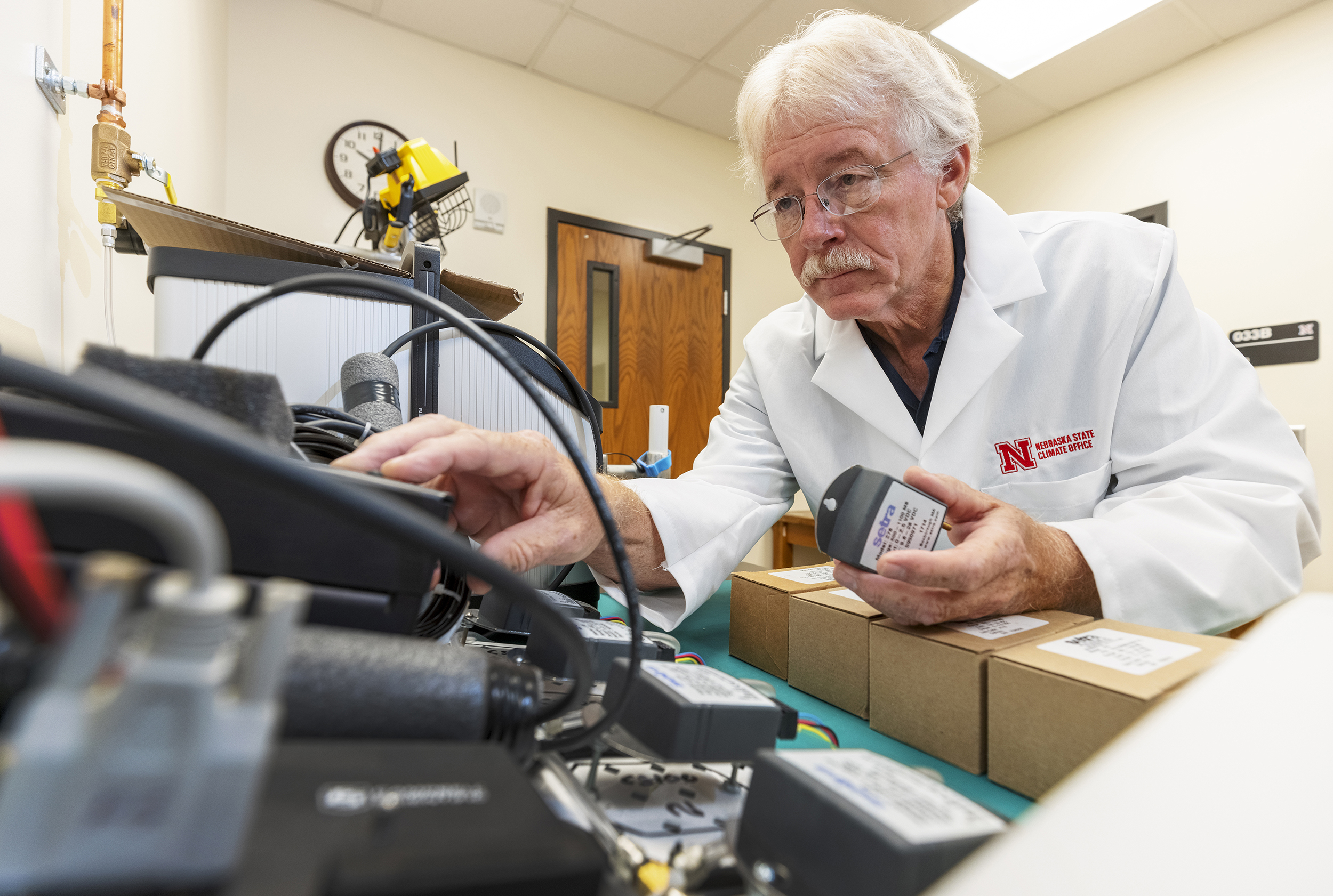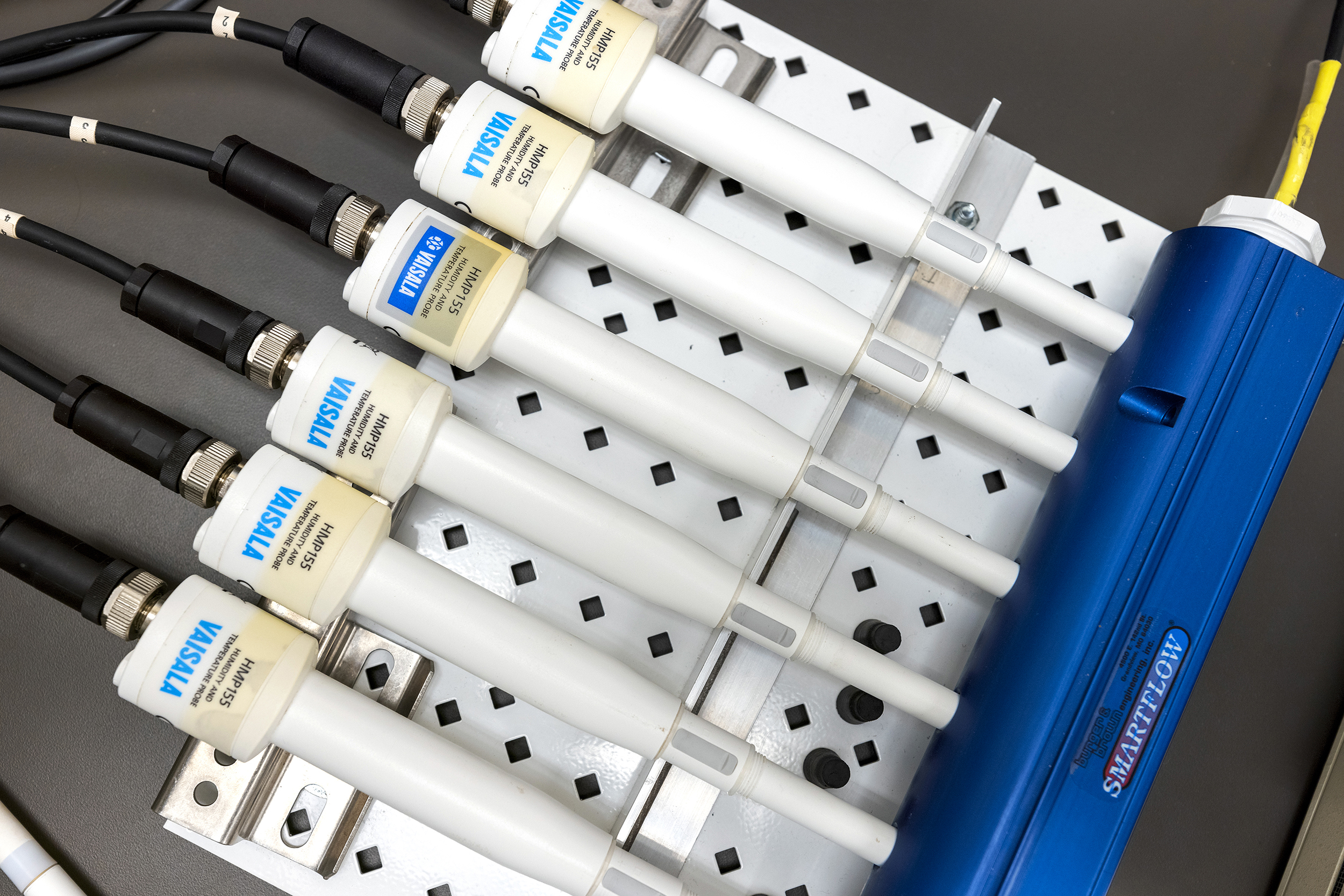
To provide people with accurate data about rainfall, temperature, wind speed and more, climatologists in states across the nation lead strategic installations of research-grade weather stations across their states. Weather stations are finely tuned machines, expected to record key data within finite margins of error. But even high-tech systems need a tune-up once in a while, Nebraska State Climatologist Martha Shulski observes.
This past summer, the State Climate Office in the University of Nebraska–Lincoln’s School of Natural Resources began offering weather station sensor calibration services for research-grade equipment used in other states.
The State Climate Office stepped in to consolidate and streamline a calibration process that is often time-consuming, Shulski said. Four different companies manufacture the sensors on a typical U.S. weather station, she said, meaning a state office must send parts to multiple companies that often have backlogs.
The Nebraska program began with a shipment from the North Dakota Agricultural Weather Network, which sent a set of 17 temperature and humidity sensors from weather stations to Hardin Hall. There, in a basement lab, senior Nebraska Mesonet technician Glen Roebke ran the meteorological instruments through a battery of tests with instruments that can calibrate air temperature, humidity, barometric pressure readings and more.
The calibration center is an extension of the work the Nebraska State Climate Office has long performed for weather station sensors in its statewide Nebraska Mesonet weather-monitoring network, Shulski said.
“We’ve always calibrated our instrumentation in house,” Shulski said. “Now we’re opening up this service to other state weather networks. We’ve got the expertise. Glen has been doing this for roughly 20 years. He looked at what manufacturers do when you ship sensors to them for calibration tests and determined what we could replicate here in the lab. He looked at what other weather networks use for their sensors and equipment and developed techniques based on that.”
That effort led to the development of, among other tools, an indoor solar calibration table that is now located in the basement lab. Roebke previously only had a finite window of time to test the solar readings of the Nebraska State Climate Office’s pyranometers, which measure solar radiation.
“We’ve done a study in the past on when the best time of year to calibrate is, and the magic month is May,” Roebke said. “There are a lot of things that go into it. We want clear days, but there are a lot of clouds in the month of May, so it limits the number of days we can use it. And the other thing that’s a huge variable is temperature. Temperature affects how these instruments work. So we don’t want to do it in late July or the middle of August, because temperature changes the output. We want to stabilize it.”
Before the table was installed, Roebke could be found in the Hardin Hall elevators every spring, bringing pyranometers up to be tested on a platform on the 10-story building’s roof, where a precision spectral pyranometer was installed.
The indoor solar calibration table allows any time in the basement lab to simulate a sunny day in May, as far as a weather station’s pyranometer is concerned.
The lab also features equipment that can test each of the typical sensors that would have normally been sent to a manufacturer when they required calibration, Shulski added.
A weather station in Nebraska observes air temperature, relative humidity, wind speed and direction, barometric pressure, solar radiation, warm-season liquid precipitation every minute, and soil temperature and soil moisture at five depths every hour. Checking equipment yearly, Roebke said, helps the Nebraska Mesonet sensors stay within a half-percent margin of error, rather than drifting 2% to 4% off, as equipment can when it’s not checked over two- or three-year stretches. “It’s a huge difference in the world of meteorology,” he said. It costs about $2,600 a year, per weather station, to run and calibrate the equipment, Shulski said. The stations are often sponsored by natural resource districts, and the equipment is in service for about a decade before its components are all replaced.
Some maintenance still requires field trips, she said. Lightning, gophers and coyotes are among a weather station’s natural enemies. If rain is measured in an area surrounding another weather station but not at that particular station, for instance, there’s a good chance that a spider web has been constructed atop its precipitation gauge. (Shulski said they spray vinegar on the gauges to prevent that.) Nebraska Mesonet’s 63 stations get inspected, and the grass around them mowed, at least four times a year.
The information collected from the sensors feeds into critical weather information systems, such as the National Weather Service. It is used to determine when to issue flood warnings and when to declare drought emergencies. It helps ag producers make irrigation decisions and parents decide whether their kids need coats at recess. It helps track the changing climate over time. Shulski said it’s imperative to make sure the weather stations are providing readings that are as accurate as possible.
Shulski said the University of Nebraska has the people, knowledge and gear to offer calibration services to states that don’t have similar in-house setups. The services help augment operational funding for the Nebraska Mesonet, she said, and could help contribute to continued expansion of the network.
Currently, 47 of the state’s 93 counties have weather stations, a strong spatial representation of what’s going on with Nebraska weather, Shulski said. However, she hopes to install at least one weather station in each of the remaining counties without one.
As more states utilize Nebraska’s calibration lab, the revenue that the project brings in will allow for students to learn on-the-job calibration training in the lab, while also testing new equipment and sensors as weather station technology evolves.
“The calibration facility is part of our long-term vision for the (Nebraska) Mesonet, and it’s quite exciting to see it come to fruition in such a short time,” Shulski said.









